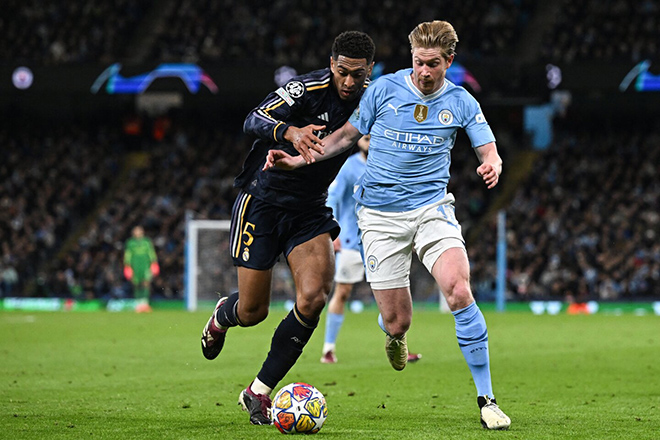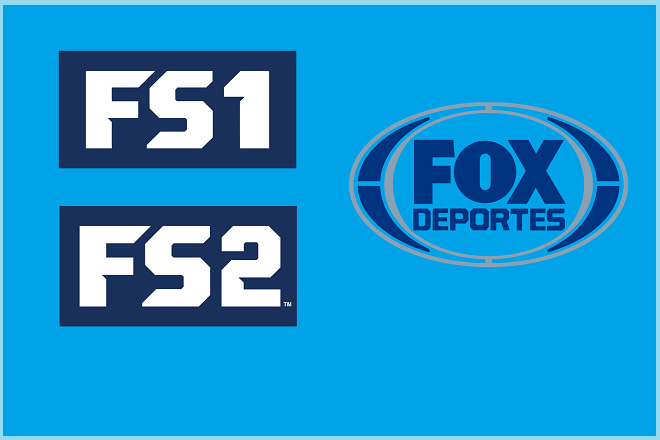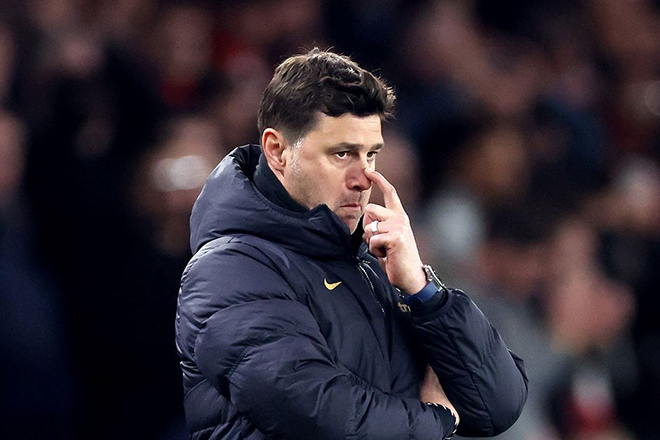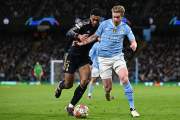.jpg) When Everton and Liverpool meet there is always a “take-no-prisoners” approach to the battle, characterized by robust challenges and bookings aplenty.
When Everton and Liverpool meet there is always a “take-no-prisoners” approach to the battle, characterized by robust challenges and bookings aplenty.
Yet the atmosphere in the stands on Merseyside has historically lacked the ominous tensions that so often pervade other derbies. Indeed, the Merseyside Derby had the distinction of being a rare example of a rivalry in which the fans were not segregated.
The Liverpool-Everton fixture therefore became known as “The Friendly Derby.”
Birth of the rivalry
The name “Everton” was first hung on a Merseyside football club in November of 1879. St. Domingo’s Methodist Church football team had been founded in 1878, but as the club began to acquire players from beyond the church parish, a new name was deemed necessary. St. Domingo’s was located in the district of Everton, and thus the football club was christened.
Everton FC played its games in a corner of Liverpool’s Stanley Park. Their success soon required a new venue, however. Mr. J. Cruit, evidently a supporter, invited Everton to use his land at Priory Road as their home ground.
The Priory Road pitch was equipped with rudimentary dressing rooms and a grandstand and must have seemed quite satisfactory to the players at the time. But after two years of noisy football spectators traipsing over his fields Mr. Cruit had a change of heart, and Everton FC were on the move again.
They took up residence in an area of Stanley Park adjacent to Anfield Road. This move would have far-reaching consequences for English football in general and Merseyside football in particular.
The ground at Anfield had been acquired by Everton chairman John Houlding, an entrepreneur and local politician (he later became mayor of Liverpool), as a home for Everton FC.
 The initial agreement between Houlding and the Everton committee was for a fixed-fee rent structure. But Houlding foresaw the need for expansion, as well as the opportunity a return on his investment. He raised rents as the crowds grew and eventually proposed that the rent be based on gate receipts instead of a fixed-fee. He also put forward the idea that the club purchase Anfield and adjacent lands and thus be prepared for future development.
The initial agreement between Houlding and the Everton committee was for a fixed-fee rent structure. But Houlding foresaw the need for expansion, as well as the opportunity a return on his investment. He raised rents as the crowds grew and eventually proposed that the rent be based on gate receipts instead of a fixed-fee. He also put forward the idea that the club purchase Anfield and adjacent lands and thus be prepared for future development.
This was all too much for the committee, who saw in Houlding’s proposal an attempt to profit at the club’s expense. It was true that Houlding would profit from the sale of the property, but he argued this was a fair return for the money he had personally invested on the club’s behalf.
The dispute forced a split between Houlding and the club, and on March 12, 1892 Everton FC quit Anfield.
While all the wrangling over rents and land purchases had been going on, however, Everton committee member George Mahon had located a ground on the other side of Stanley Park. The place was called “Mere Green Field,” and it became the site of Goodison Park, the first football ground in England to be built specifically for that purpose.
Houlding was left with an empty football pitch at Anfield, and what better use of an empty pitch than to put a football team in it? His initial intent was to hang on to the Everton name. He called his new team Everton FC and Athletic Grounds Ltd., or Everton Athletic for short.
The Football Association apparently saw this distinction as a finer hair than they wanted to split. The obvious difficulties of two clubs with the same name in the same league may have strained logic too. The Association refused to sanction a second Everton and John Houlding was forced to come up with a new name for his new team.
He called it Liverpool Football Club.
Initial encounters and the first Merseyside Derby
The newly-formed Liverpool FC played their first game at Anfield on September 1, 1892 against Rotherham. The following day, September 2, Everton FC inaugurated their new home, Goodison Park, with an exhibition match against Bolton Wanderers.
The first game between Liverpool and Everton took place in 1893 in the Liverpool Senior Cup. Liverpool won that match 1-0.
The first league match between the two took place on October 13, 1894 at Goodison Park. This is considered by both clubs to be the first official Merseyside Derby. Everton were victorious on that occasion, defeating Liverpool 3-0. The depth of Everton’s desire to beat their neighbors from across Stanley Park was clear even then. The Toffees management had promised their players an added incentive for a win. Each player would receive a silk hat as a bonus!
In those early days Everton were clearly the class of the competition. It wasn’t until 1897, on their sixth attempt, that Liverpool won their first Merseyside Derby when they beat the Toffees 3-1 at Anfield.
Religion? Economics? What is the basis of the rivalry
The notion of a religious origin for club loyalties on Merseyside has sometimes focused on a Protestant-Catholic aspect. This seems unlikely, since both Everton and Liverpool share the same Methodist background through their connection with St. Domingo’s.
Then, too, religion by its nature is generally a shared familial belief. This might suggest that team loyalties on Merseyside would cut between families of different denominations (as it does so often in Glasgow, where support for Rangers or Celtic is generally based on religious views). On Merseyside, however, support for Everton or Liverpool often cuts through families, not between them. Religion, therefore, seems an unlikely cornerstone for football support in Liverpool. The Protestant-Catholic aspect may have simply grown from the connection the clubs have had over the years with the many Irish and Scottish players who have worn their colors.
 Neither can a socio-economic component be assumed. Everton’s nickname, “the Toffees,” has no connection whatever with the pejorative British slang for upper class pretensions. (Indeed, the district of Everton is a working class area of Liverpool, and has suffered its share of social issues.) There’s a simpler explanation: the Toffees nickname comes from a sweet shop near Goodison Park that specialized in toffees.
Neither can a socio-economic component be assumed. Everton’s nickname, “the Toffees,” has no connection whatever with the pejorative British slang for upper class pretensions. (Indeed, the district of Everton is a working class area of Liverpool, and has suffered its share of social issues.) There’s a simpler explanation: the Toffees nickname comes from a sweet shop near Goodison Park that specialized in toffees.
The key component of the Merseyside Derby may simply be their shared ancestry and the proximity of the two clubs. With Anfield Stadium and Goodison Park located at opposite ends of Stanley Park, less than a mile apart, a rivalry between the two clubs would seem inevitable, while a person’s choice of allegiance may be based on nothing more than that, choice. Or perhaps an inherited loyalty to one team or the other handed down through family members.
Records and Honors
 Liverpool’s domestic and European success has made them a giant of the English game and a force to be reckoned with in world football too. But much of that success, in particular the five European Championships they have won, has come in recent decades,…the 80’ and 90’s in particular.
Liverpool’s domestic and European success has made them a giant of the English game and a force to be reckoned with in world football too. But much of that success, in particular the five European Championships they have won, has come in recent decades,…the 80’ and 90’s in particular.
During that same period of time, with a notable exception of a European Cup Winners Cup in 1985, Everton have become recognized as the second team in the city of Liverpool. But it wasn’t always this way.
Everton has three times had the misfortune to have developed winning sides at times when events beyond their control conspired to blunt their success. For example, they won the league in 1914-15. World War I put an end to football for a while after that. They won the league in 1938-39, too. The Second World War stopped football again. And when they won the league in 1984-85 and again in 1986-87 they did so at a time when English clubs were banned from European competition. (See Recent History below for more on that.) Everton FC may well have stocked additional silverware in their cupboard were it not for such unfortunate timing.
Nevertheless, the two Merseyside clubs have made Liverpool the most successful football city in England. Between them they have won,
- The English league championship: 27 times (Liverpool 18, Everton 9)
- The FA Cup: 12 times (Liverpool 7, Everton 5)
- The League Cup: 9 times (Liverpool 7, Everton 2)
- The Charity/Community Shield: 24 times (Liverpool 15, Everton 9)
- The European Cup/UEFA Champions League: 5 times (Liverpool 5)
- The European Cup Winners Cup: 4 times (Liverpool 3, Everton 1)
- The UEFA Super Cup: 3 times (Liverpool 3).
Recent History
Relationships between the two clubs and their fans have been evolving and not always for the better. The notion of “The Friendly Derby” has become strained.
Liverpool’s greater success has created a rivalry with Manchester United that may, in some Liverpudlian eyes, be more important than the Merseyside Derby. For Everton, though, Liverpool is still the big match of the season.
Rancor has grown also from Liverpool’s unfortunate involvement in the Heysel Stadium disaster in 1985 in which some 39 people, mostly Juventus fans, were killed when a retaining wall collapsed under the weight of the crush caused by rioting Liverpool supporters.
English clubs were banned from European football for five years. Everton, who had won the league in 1984-85 and again in 1986-87, as well as the European Cup Winners Cup in 1985, missed out on their chance to compete in Europe at a moment in their history when they clearly had a squad capable of contending seriously for Europe silverware. By the time the ban was lifted Everton’s moment had passed, and Evertonians blame Liverpool for their missed opportunity.
Merseyside football today
Both clubs have fallen on hard times as these words are written. They currently languish near the bottom of the league table. There is optimism on Merseyside, however.
Liverpool has just been sold to a new ownership group, and expectations for a return to the glory days of the 70s and 80s are high.
Everton, on the other hand, have generally been a club expected to finish anywhere somewhere above mid-table, and in recent years have done so after relatively poor starts to their season.
Football fortunes ebb and flow continually, however, and although Liverpool and Everton are currently less successful than they would prefer or expect, few Scousers would doubt that a return to success is just around the corner.





























